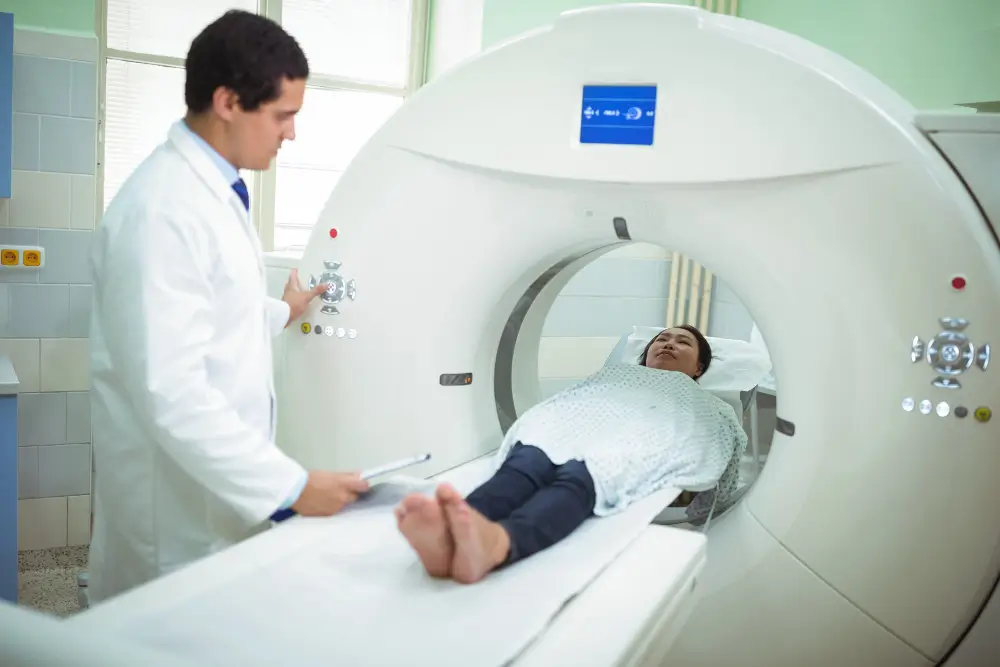In the realm of advanced medical imaging, DOTA scan in Mumbai has emerged as a pivotal tool for diagnosing and managing various health conditions. Conducted at leading facilities such as Ace Imaging, this procedure provides critical insights into the body’s functional processes. In this blog, we will delve into the benefits, the process, and the specific circumstances under which a DOTA scan is recommended.
What is a DOTA Scan?
A DOTA (Diethylene Triamine Pentaacetic Acid) scan, often referred to as a somatostatin receptor scintigraphy, is a specialized imaging technique that utilizes a radioactive tracer to visualize specific cellular functions in the body. This scan is particularly effective in identifying neuroendocrine tumors and other conditions related to hormone-secreting cells.
Benefits of DOTA Scan
1. Early Detection of Diseases
One of the primary advantages of a DOTA scan is its ability to detect diseases at an early stage. This is crucial for conditions like neuroendocrine tumors, where timely intervention can significantly improve patient outcomes.
2. Non-Invasive Procedure
The DOTA scan is a non-invasive imaging technique, meaning it does not require any surgical procedures. Patients can undergo the scan comfortably without the need for anesthesia or extensive preparation.
3. Comprehensive Imaging
DOTA scans provide comprehensive imaging that helps in visualizing not just tumors but also the functionality of organs and tissues. This comprehensive view is essential for accurate diagnosis and treatment planning.
4. Minimal Side Effects
The procedure has minimal side effects compared to other diagnostic tests. Most patients can return to their normal activities shortly after the scan, making it a convenient option for many.
The Process of a DOTA Scan
Preparation
Before undergoing a DOTA scan, patients may be advised to follow certain preparatory steps, which could include:
- Fasting: Patients are often required to fast for a few hours before the scan.
- Medications: Inform your doctor about any medications you are currently taking, as some may need to be paused before the scan.
Procedure
The DOTA scan involves the following steps:
- Injection of Tracer: A radioactive tracer is injected into a vein, typically in the arm. This tracer binds to the somatostatin receptors present in certain tumors and tissues.
- Waiting Period: After the injection, there is usually a waiting period of about 1 to 4 hours to allow the tracer to circulate and accumulate in the target areas.
- Imaging: The patient will then be positioned in front of a gamma camera that detects the radiation emitted by the tracer. Multiple images will be taken from various angles to create detailed pictures of the body.
- Duration: The entire process, including the waiting time, can take several hours, but the actual imaging usually lasts about 30 minutes.
When is a DOTA Scan Needed?
A DOTA scan is typically recommended in the following situations:
- Suspicion of Neuroendocrine Tumors: If a doctor suspects a neuroendocrine tumor based on symptoms or initial tests, a DOTA scan can confirm the diagnosis.
- Monitoring Treatment Response: Patients undergoing treatment for neuroendocrine tumors may need periodic DOTA scans to assess how well the treatment is working.
- Evaluating Symptoms: Unexplained hormonal symptoms may lead physicians to recommend a DOTA scan to check for potential underlying causes.
Conclusion
If you’re seeking a DOTA scan in Mumbai, Ace Imaging offers state-of-the-art facilities and expert medical staff to ensure a smooth experience. With its ability to provide vital information about neuroendocrine tumors and other conditions, the DOTA scan is an invaluable tool in modern medical diagnostics.
For more information about the DOTA scan process, benefits, or to schedule an appointment, feel free to contact Ace Imaging today!
![]()

